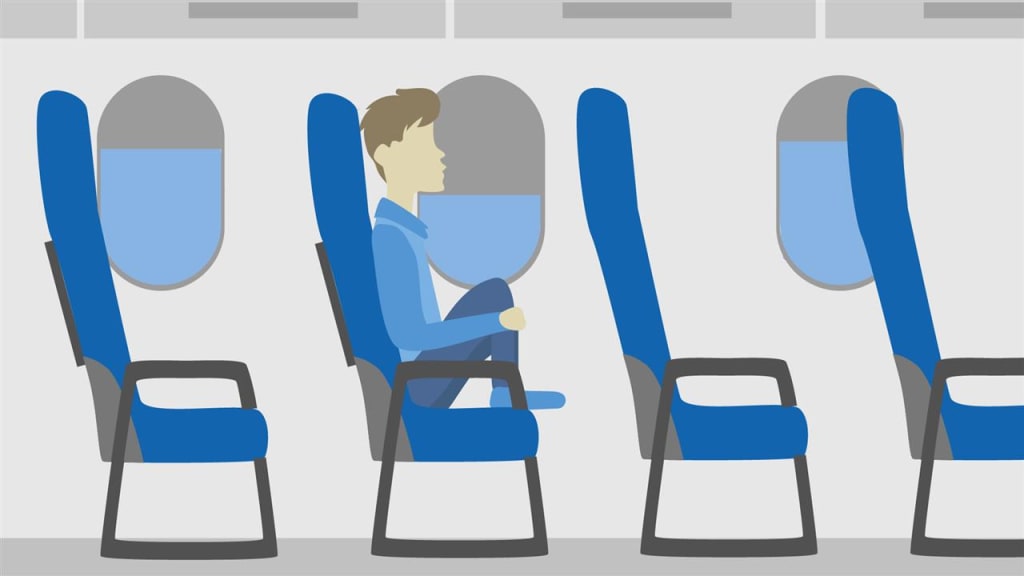The Evolution of Airplane Legroom: From Luxury to a Commodity
Unraveling the Economics of Legroom

As travelers across the globe have noticed, the once-spacious legroom in airplanes has been gradually shrinking over the years. This article takes a deep dive into the history of airplane seat design, exploring how legroom has evolved from the luxurious days of the past to the present era where it's often viewed as a premium commodity.
A Changing Landscape of Comfort
As passengers board modern aircraft, the diminishing legroom can't escape notice. The Airbus A319, a common sight in today's skies, serves as an example of the changing dynamics of airplane seat design. What used to be considered ample space has now become a matter of discussion and debate.
Unveiling the Blueprint
The author of the article, taking a flight from New York to Chicago on an Airbus A319, carries with them the aircraft's blueprints that reveal crucial data about seat pitch, a term that denotes the distance between the beginning of one seat and the back of the seat in front. Often colloquially referred to as legroom, seat pitch is the defining factor in passenger comfort during flights.
The Quest for Comfort
The article highlights the author's experience as a passenger of average height—5'9"—and explores the role of buttock-to-knee length in defining comfort. While the author finds a relatively comfortable position due to their seat pitch of around 5 to 6 inches, fellow travelers who are taller express discomfort due to restricted legroom.
Historical Context: From Luxury to Compact
Comparing the present scenario to decades past, the article invokes nostalgia for the spaciousness of earlier aircraft. The iconic DC-3, a 1936 aircraft used for decades by American Airlines, boasted a seat pitch of 39 inches—significantly more than today's economy class.
Economic Pressures and Air Travel Transformation
The article delves into the economic factors that have led to the evolution of seat design. Rising fuel costs and global events that affected travel patterns compelled airlines to unbundle services, leading to the introduction of fees for various amenities. This unbundling gave rise to tiered classes of seating, giving passengers the freedom to choose comfort according to their preferences and budget.
Unbundling: Impact and Innovation
The concept of unbundling allowed airlines to cater to diverse passenger needs, and this strategy has translated into increased revenues. For instance, airlines like JetBlue and Spirit have experienced significant revenue growth through fees for services like seat selection. Furthermore, innovations in seat design, such as thinner seats and space-saving layouts, have contributed to cost savings and increased seating capacity.
The Future of Air Travel Comfort
Looking ahead, the article explores the potential trajectory of air travel comfort. While passengers reminisce about a time when seat selection wasn't a factor in the ticket price, industry experts predict that segmentation of seating options will continue. Different classes of products will coexist, allowing passengers to self-select based on their preferences.
Regulations and Safety Concerns
Despite the economic trends driving the evolution of seat design, safety considerations remain paramount. The article sheds light on the FAA Reauthorization Act of 2018, which called for minimum dimensions for passenger seats for safety purposes. However, the lack of clear evidence linking seat size to emergency evacuation delays has hindered the implementation of stricter regulations.
The Tension Between Comfort and Safety
The article wraps up by examining the intricate balance between passenger comfort and safety. While the concept of comfort wasn't central to the study influencing seat regulations, it's evident that the dynamics of the aviation industry are transforming. As air travel continues to evolve, passengers are faced with decisions about how much they're willing to pay for enhanced comfort and legroom.
In summary, the journey from spacious airplane seating to today's compact designs is a tale of economic shifts, innovation, and evolving passenger preferences. As the airline industry continues to adapt, passengers find themselves at a crossroads between nostalgia for the past and the practical realities of modern air travel.
About the Creator
Vivian Yao
News, economy, history, politics, and much more...






Comments
There are no comments for this story
Be the first to respond and start the conversation.